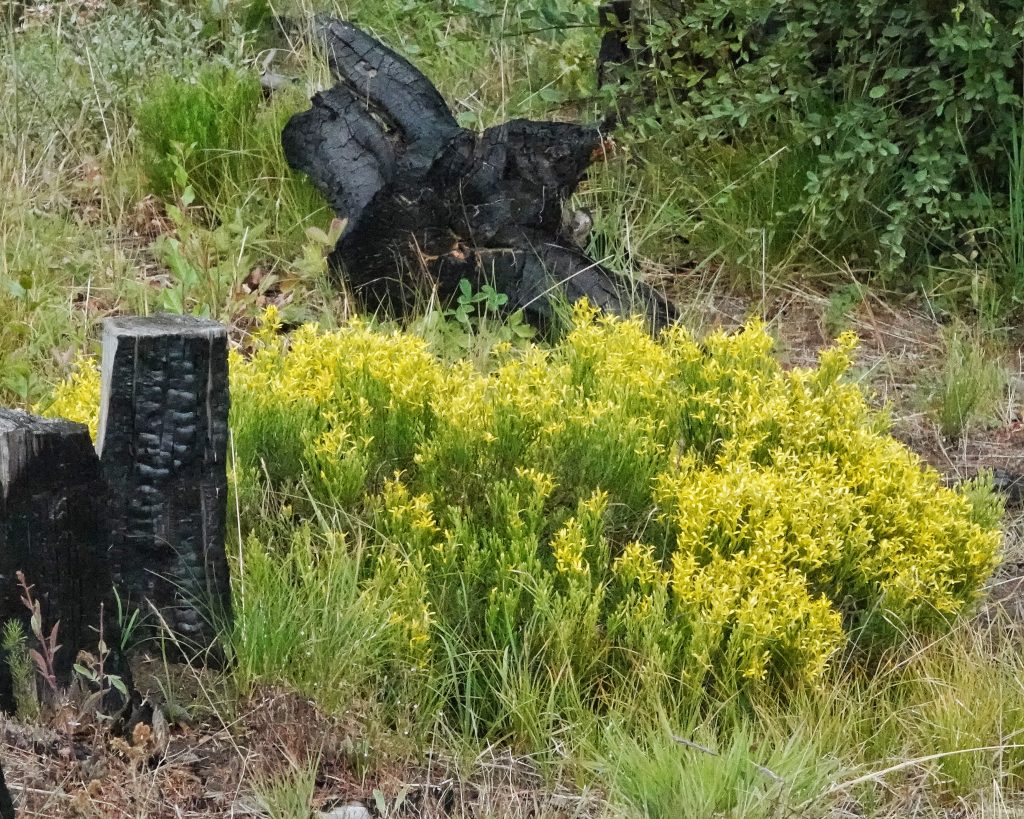
I got really lucky identifying these beautiful members of the family Asteraceae ( which carry the common names rabbitbrush goldenweed, rabbitbrush, heath goldenrod, and Bloomer’s goldenbush) since I forgot to take “Flora of the Pacific Northwest” with me when I made this scouting trip to the south side of Mt. Adams on Saturday, and I had forgotten how many different rabbitbrushes (Ericameria sp.) there are. Fortunately my photos were clear enough to see that there were many flowers per stem, they were ray flowers and the petals were fairly long, and the leaves were very thin and long, which ruled out everything except Ericameria bloomeri.
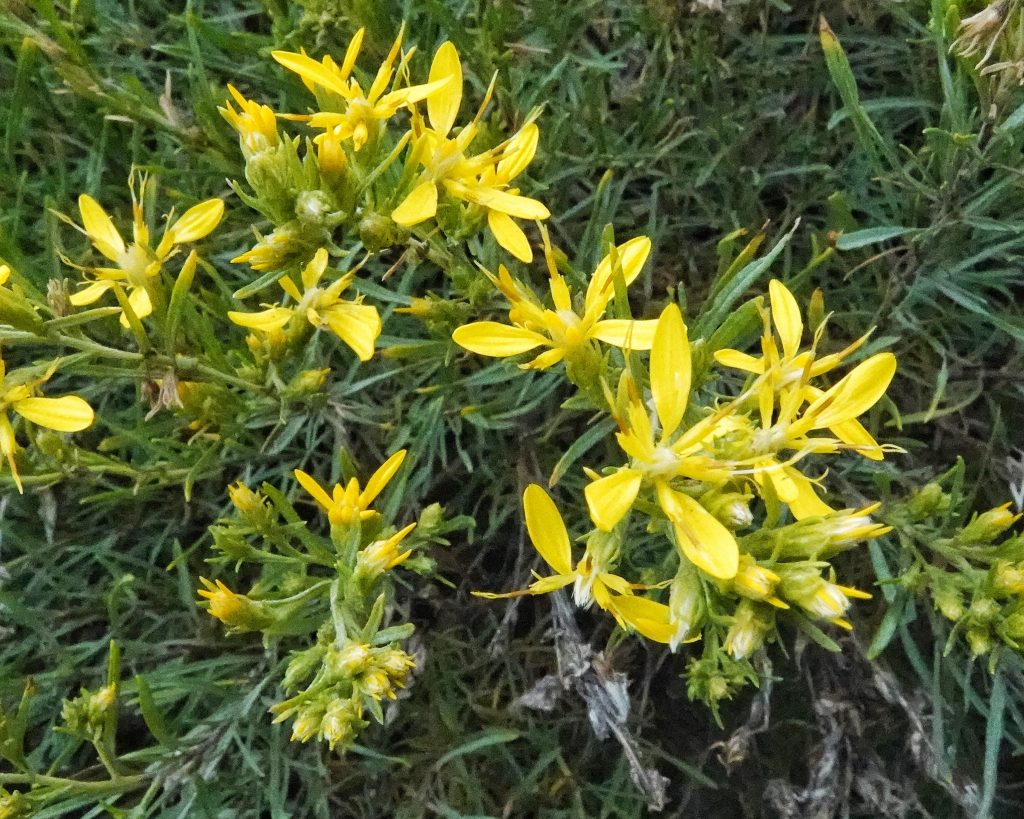
I was mostly up at Mt. Adams to see if any of the buckwheats were still in bloom, which they were not, but after finding all of the rabbitbrush goldenweed I ended up being disappointed that it was so overcast (and even rained a bit), because this plant is apparently a pollinator magnet, and is especially attractive to butterflies, and there were very few of them that were active because of the lack of solar energy. But hopefully I can get back up there very soon and observe it in all its pollinator magnet glory. And after a couple weeks straight of moth madness I figured you folks might like to see some flowers for a change.
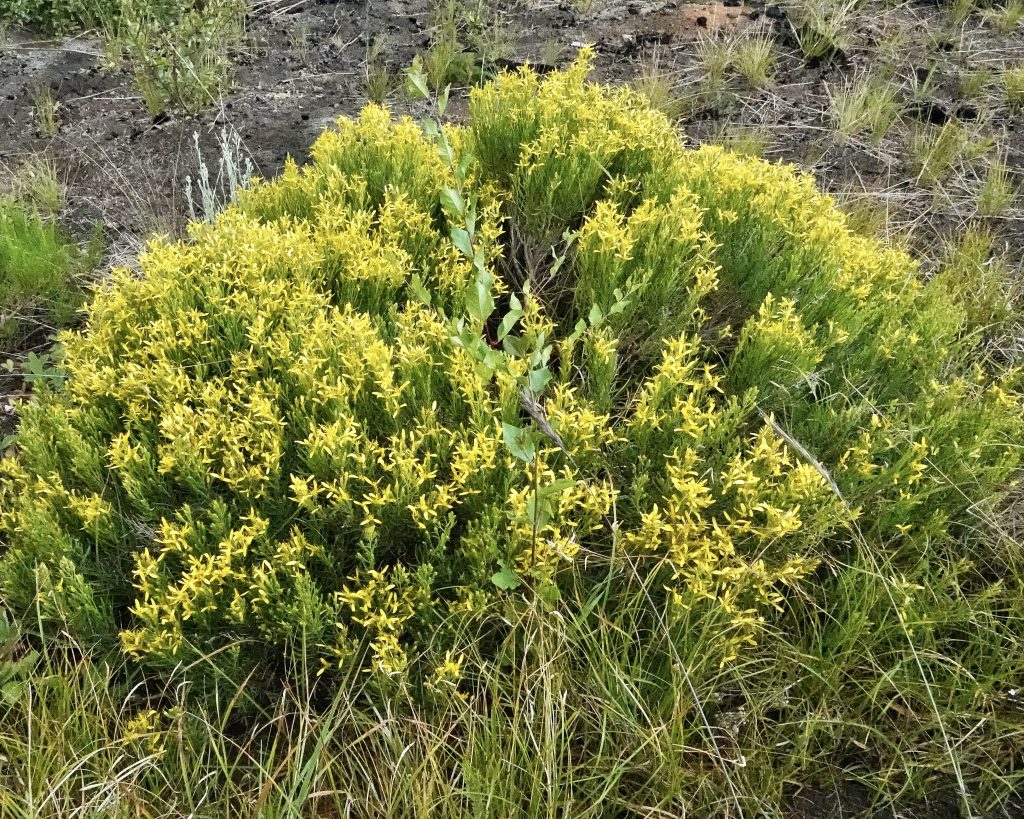
Ethnobotany– The only ethnobotanical use I can find for this plant is that the Klamath tribe used a poultice of it to draw out blisters, although I can find dozens of them for other Ericameria.
Description– “8-24’ tall…Shrubby, with erect new growth, hairless to slightly woolly or with glands. Leaves thread-like, to 1–3 in., with pointed tip. Flower heads crowded [up to 20] at stem tips. Flower head has 1–5 ray flowers to 1/2 in. long, 4–13 disk flowers.
Similar species– Ericameria greenei has wider, oblong to spatulate leaves; E. suffruticosa has only 1-3 flowers per stem; E. resinosa and E. nana have much smaller (less than 7mm) rays on the flowered; other Ericameria are either densely hairy, have no ray flowers, or both.
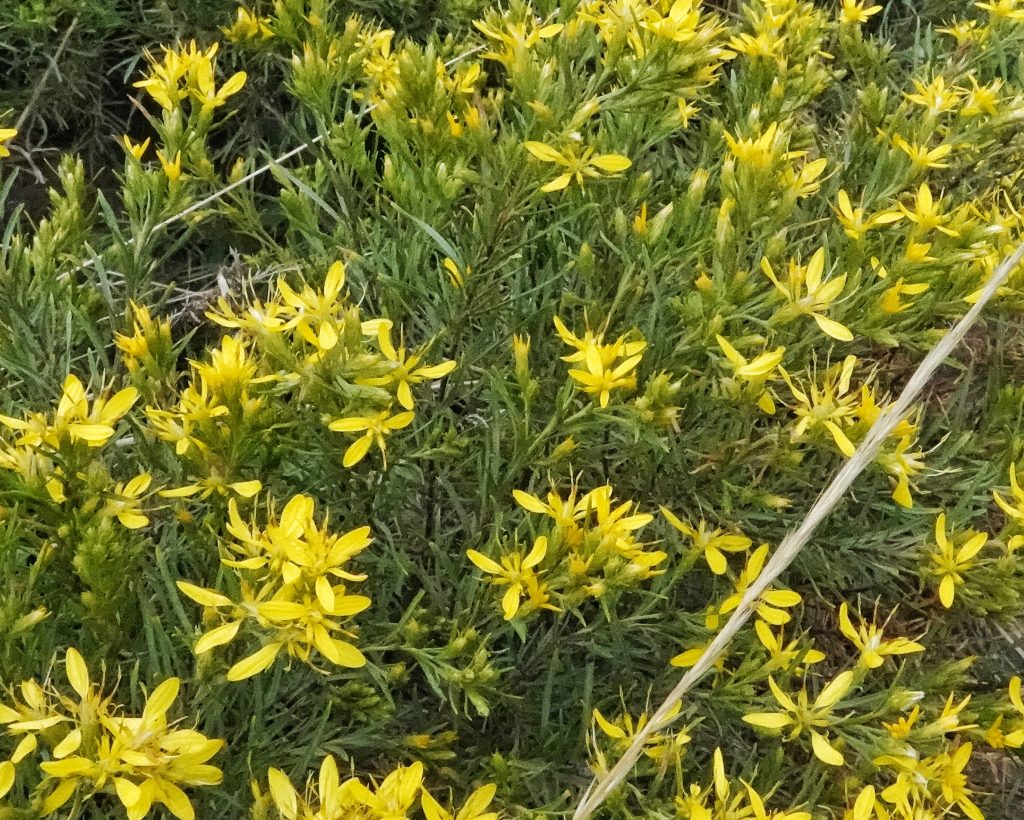
Habitat– “Mixed forests, pine woods, shrublands, open slopes, ridges, roadsides. Flowering Jun–Sep. 900–2800 m” OregonFlora Ericameria bloomeri; “Dry, rocky slopes and open woods, from the foothills to moderate elevations in the mountains.” Ericameria bloomeri – Burke Herbarium Image Collection
Range– Western North America; found in our region from the Cascades east to the western slopes of the Rockies; it has probably been extirpated in BC.
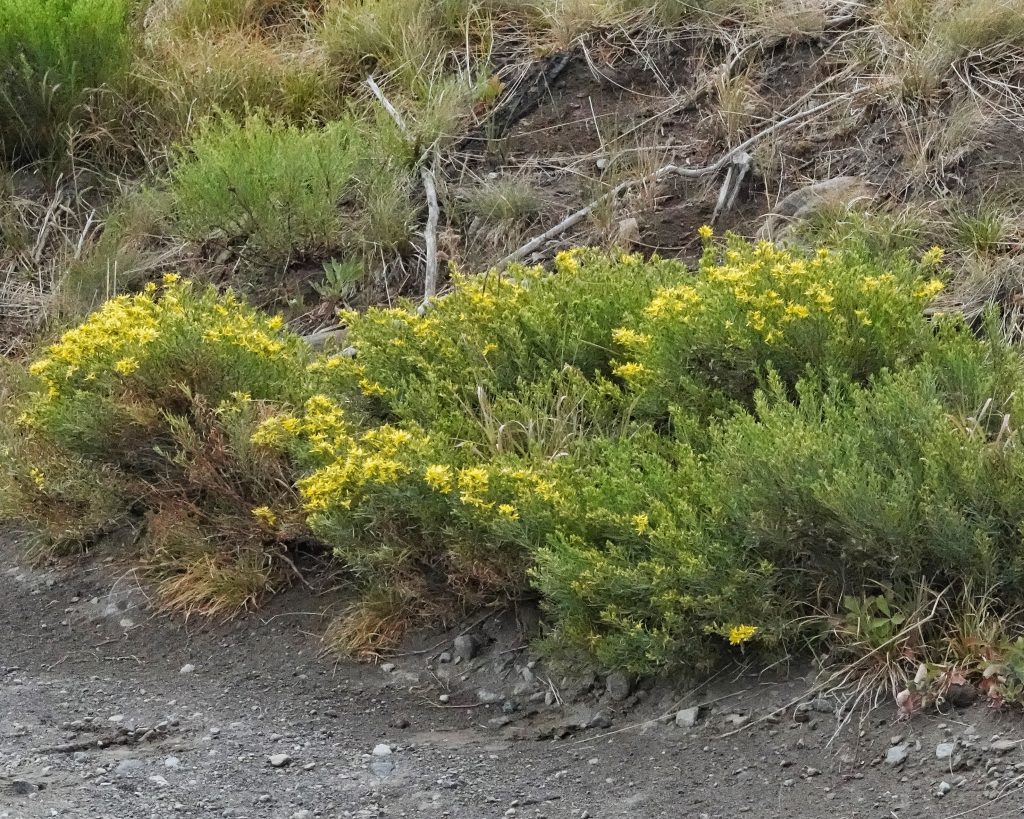
Eaten by– “Nectar: Pine White. Atlantis Fritillary, Coronis Fritillary, Great Spangled Fritillary (fq), Callippe Fritillary, Mormon Fritillary, California Tortoiseshell (fq), West Coast Lady, Great Basin Wood-Nymph. California Hairstreak, Hedgerow Hairstreak, Anna Blue, Boisduval’s Blue. Persius Duskywing, Juba Skipper (fq), Columbian Skipper (fq), Woodland Skipper, Fiery Skipper.” https://www.cnps-scv.org/images/handouts/CaliforniaPlantsforLepidoptera2014.pdf; “All going nuts on what I believe was Ericameria bloomeri, “rabbitbrush goldenweed”: Plebejus anna (Anna’s blue)…Plebejus icarioides (Boisduval’s blue)…Satyrium semiluna (halfmoon hairstreak)…Cercyonis sthenele (great basin woodnymph)…Ochlodes sylvanoides (woodland skipper)” http://northwestbutterflies.blogspot.com/2011/ ; there are many moths, picture-wing flies in the genus Aciura, and leaf beetles that use various Ericameria either as a larval host or for adult feeding, but I can find nothing specific to this species; I also cannot find any information on what other vertebrate and invertebrate herbivores may browse this, although other species of Ericameria are apparently more palatable after the first frost.
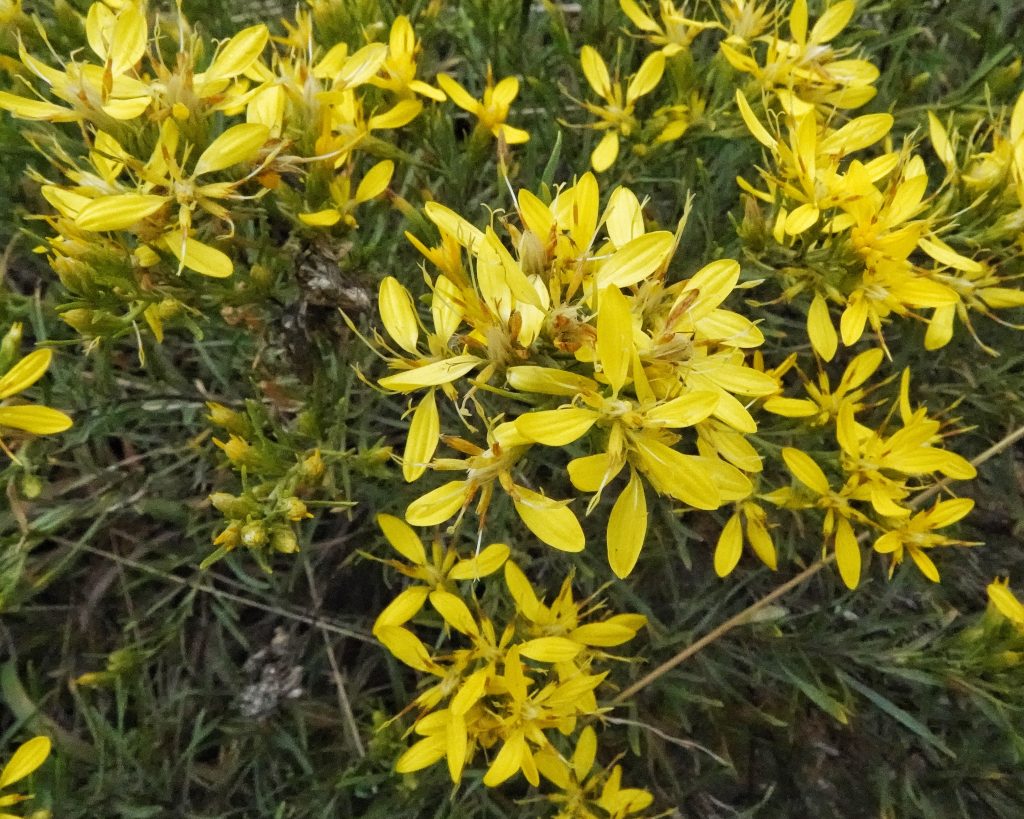
Reproductive timing– Flowers bloom from July through September
Etymology of names– Ericameria is from the Greek word for ‘division/part’ and the genus ‘Erica’, alluding to the supposed resemblance of the leaves to those of heath. The specific epithet bloomeri is “Named for Dr. Hiram Green Bloomer (1819-1874), an early San Francisco botanist and one of the founders of the California Academy of Sciences”Ericameria bloomeri (Rabbitbrush)
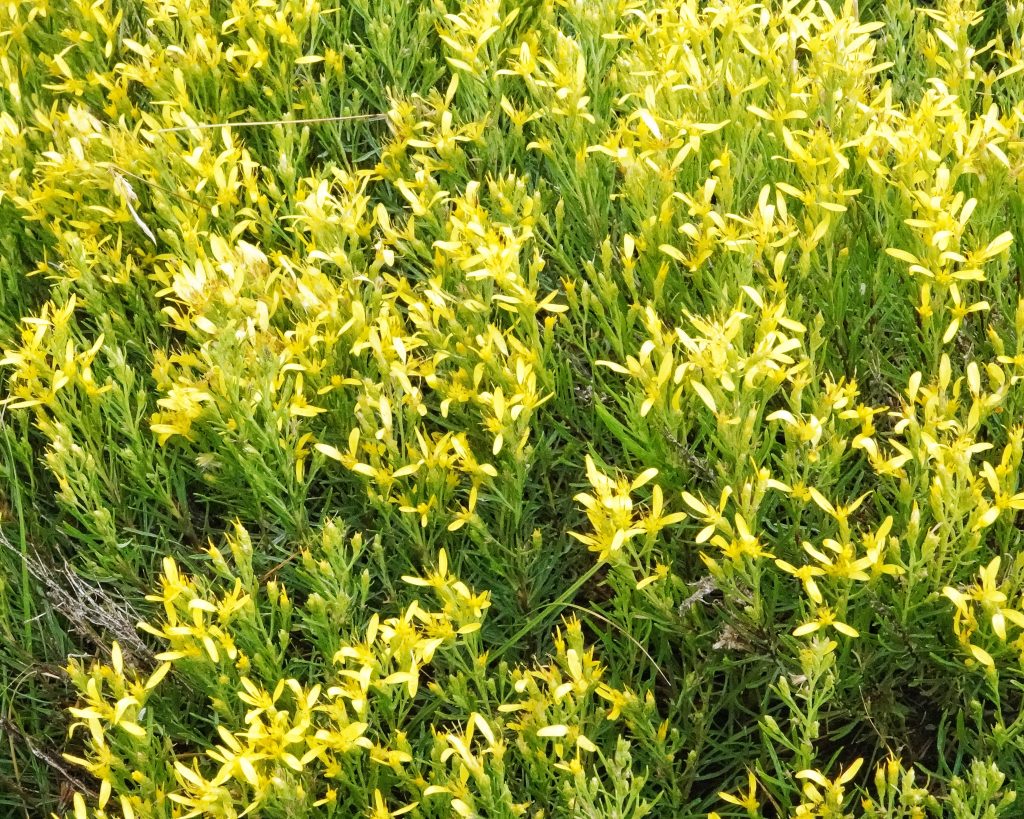
OregonFlora Ericameria bloomeri
Ericameria bloomeri | Rabbitbush Goldenweed | Wildflowers of the Pacific Northwest
Ericameria bloomeri in Flora of North America @ efloras.org
Ericameria bloomeri – Burke Herbarium Image Collection
BRIT – Native American Ethnobotany Database
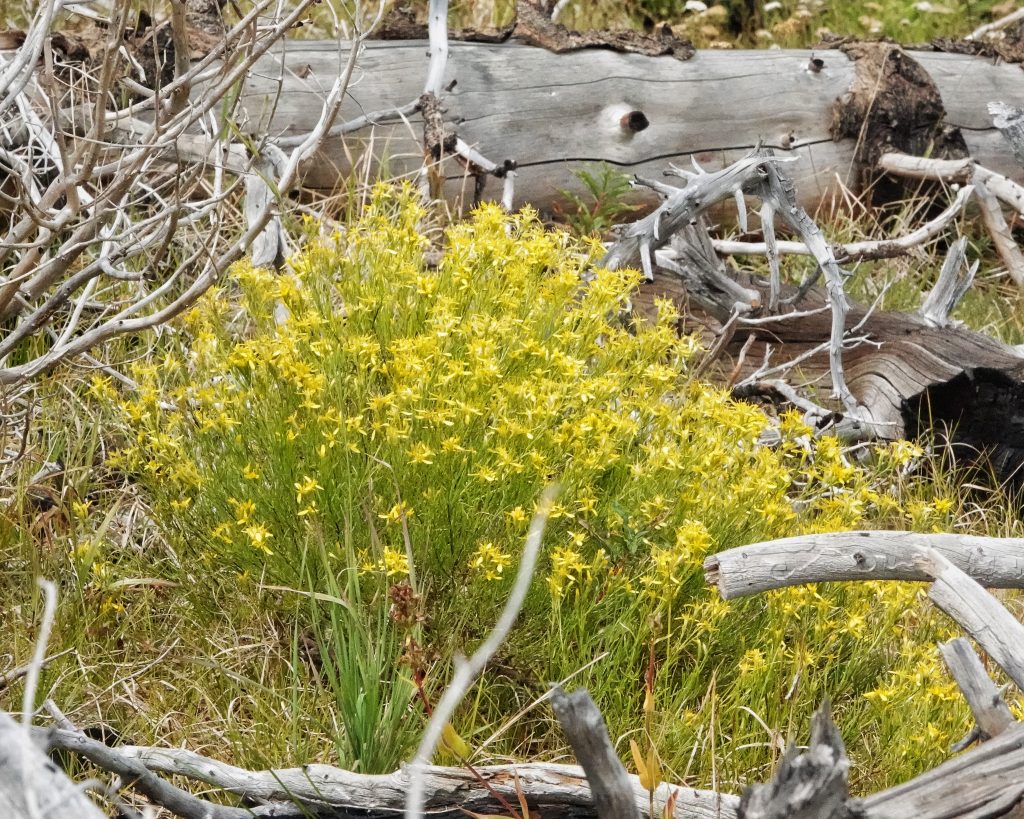
Thanks for this entry on rabbit brush. I have friend who is allergic to rabbit brush pollen and I have never been quite sure what she is talking about.
You’re welcome, Michael! Always nice to be able to link an image to a name.
We have Ericameria around here, but not bloomeri, and that makes me sad because Rricameria bloomeri is terrifically fun to say!
You’re right, Kat! It is fun to say! Hadn’t said it out loud before😀